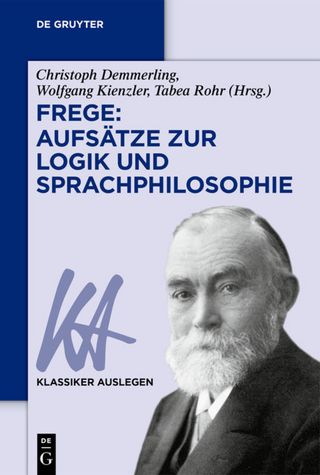
Aristotle and Philoponus on Light
Seiten
2017
Routledge (Verlag)
978-1-138-94235-6 (ISBN)
Routledge (Verlag)
978-1-138-94235-6 (ISBN)
Originally published in 1991. Philoponus’ long commentary on Aristotle’s definition of light sets up the major concerns, both in optics and theory of light, that is discussed here. The material investigated in this book contains much about the physiology of vision as well as the propagation of light.
Originally published in 1991. Philoponus’ long commentary on Aristotle’s definition of light sets up the major concerns, both in optics and theory of light, that are discussed here. Light was of special interest in Neoplatonism because of its being something incorporeal in the world of natural bodies. Light therefore had a special role in the philosophical analysis of the interpenetration of bodies and was also a paradigm for the soul-body problem. The book contains much about the physiology of vision as well as the propagation of light. Several chapters investigate the philosophical theory behind what came to be known as ‘multiplication of species’ in medieval light theory. These issues in the history of science are placed within an analysis of Neoplatonic development of the distinction between Aristotle’s kinesis and energeia. The book treats Philoponus’ philosophy of mathematical science from the point of view of matter, quantity, and three-dimensionality.
Originally published in 1991. Philoponus’ long commentary on Aristotle’s definition of light sets up the major concerns, both in optics and theory of light, that are discussed here. Light was of special interest in Neoplatonism because of its being something incorporeal in the world of natural bodies. Light therefore had a special role in the philosophical analysis of the interpenetration of bodies and was also a paradigm for the soul-body problem. The book contains much about the physiology of vision as well as the propagation of light. Several chapters investigate the philosophical theory behind what came to be known as ‘multiplication of species’ in medieval light theory. These issues in the history of science are placed within an analysis of Neoplatonic development of the distinction between Aristotle’s kinesis and energeia. The book treats Philoponus’ philosophy of mathematical science from the point of view of matter, quantity, and three-dimensionality.
Jean De Groot is Professor of Philosophy at The Catholic University of America in Washington DC.
Preface 1. Philoponus and Alexandria: An Historical Introduction 2. Reconciling the Mathematical and Physical Aspects of Optics 3. The Propagation of Light Without the Passage of Time 4. The Propagation of Light, Impetus Theory, and Aristotle’s Physics III.3 5. Reexamining the Case for Neoplatonic Influence on Philoponus’ Causal Theories 6. The Physical Basis for Mathematical Demonstration in Optics 7. Mathematical Demonstration in a Mixed Science 8. Conclusion. Appendices: Analysis and Translation of Philoponus’ Commentary on De Anima II.7, 418b9; On the Interpretation of Physics VIII.3, 253b15-35. Bibliography. Indices
| Erscheinungsdatum | 07.08.2017 |
|---|---|
| Reihe/Serie | Routledge Library Editions: Aristotle |
| Verlagsort | London |
| Sprache | englisch |
| Maße | 156 x 234 mm |
| Gewicht | 453 g |
| Themenwelt | Schulbuch / Wörterbuch ► Lexikon / Chroniken |
| Geisteswissenschaften ► Philosophie ► Logik | |
| Geisteswissenschaften ► Philosophie ► Philosophie Altertum / Antike | |
| Mathematik / Informatik ► Mathematik | |
| Naturwissenschaften ► Physik / Astronomie ► Optik | |
| ISBN-10 | 1-138-94235-9 / 1138942359 |
| ISBN-13 | 978-1-138-94235-6 / 9781138942356 |
| Zustand | Neuware |
| Informationen gemäß Produktsicherheitsverordnung (GPSR) | |
| Haben Sie eine Frage zum Produkt? |
Mehr entdecken
aus dem Bereich
aus dem Bereich
ein Gegenentwurf zum kurzfristigen Denken : so werden wir zu den …
Buch | Hardcover (2023)
REDLINE (Verlag)
18,00 €


